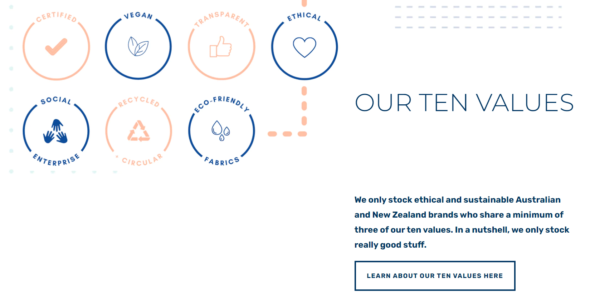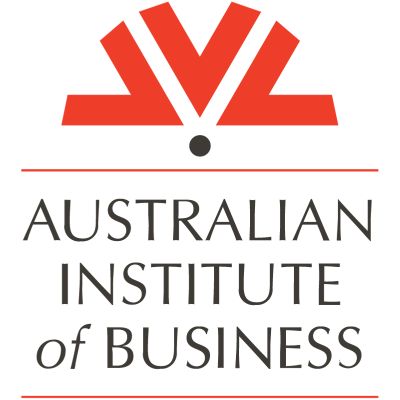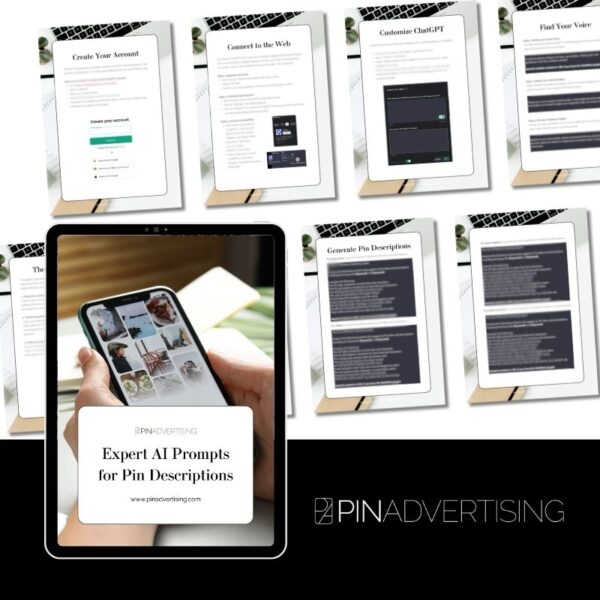17 Ways to Increase eCommerce Conversions for Sustainable & Digital Products
Authors: Chantell Collins and Carmen Hawker | Editor: Cassie Bailey
As an online store owner, your time and energy are precious resources. You can’t afford lackluster customer experiences when trying to stand out in a crowded marketplace.
Scaling sustainable or digital product sales can be overwhelming. Where should you start?
- How should I structure my sales pages?
- What product keywords should I use?
- Do I need a list of eCommerce FAQs?
- Should I set up ‘abandoned cart’ emails?
- Is video more effective at converting new customers?
After working with over 125 brands across multiple industries, we’ve seen the impact a smoother shopping experience can have on a business’s bottom line.
To help you get started on improving your conversion rates, we’ve compiled a comprehensive checklist. Here are 17 actionable methods to optimize your eCommerce conversion rates for sustainable and digital products.
Download your free eCommerce Conversion Checklist
Access your actionable eCommerce conversion checklist and AI prompt for online stores.

What’s considered a ‘good’ conversion rate?
Each year, the average number of pages per visit and visit duration decreases.
Customers now spend less time on your site before deciding to buy. You may have less than 7 seconds to make a good impression and provide an enjoyable customer experience that converts.
Understanding what constitutes a conversion is crucial. For product-based businesses, ‘conversions’ refer to actions people take, such as signing up for your email list, adding items to their cart, and the all-important checkout.
This critical metric represents the number of customers who have made it through your marketing funnel and not leaked out halfway through.
How to calculate the conversion rate of your eCommerce website
- Take your total number of conversions (e.g. email sign-ups or sales)
- Divide it by the number of website visitors
- Then multiply it by 100.
For example: The conversion rate for 3 sales from 100 website visitors would be (3 / 100) x 100 = 3%.
What determines a ‘good’ conversion rate can depend on your industry and product. However, based on our experience, a conversion rate between 1-3% is typically considered excellent.
Consequently, if your current rate falls below 1%, there are simple steps that can help to improve it.
Optimizing your sales pages for eCommerce conversions
Before we jump into how to improve your conversion rate, let’s talk about optimization.
We’ve seen businesses invest in lead generation using interactive methods such as quiz marketing. However, they often invest too little into the user experience on the product sales page.
For example, to showcase your products on Pinterest, you can Pins that link to your sales pages. Then, every time a user clicks on the pin, they are taken to the specific product page.
By focusing on optimizing these sales pages, you can significantly enhance your conversion rates.
Potent Pinterest Templates for Digital Products & Courses
Tired of the time-consuming struggle to tweak bland Canva templates into Pinterest Pins that truly represent your brand? Our Potent Pinterest Templates offer a shortcut to creating proven, click-worthy Pins in minutes (not hours). Grab your professional, easy-to-edit Pinterest templates for digital products and online courses today.
17 ways to optimize your eCommerce conversion rate
1. Track your eCommerce metrics
You can’t manage or improve what you don’t measure. If you aren’t already tracking key eCommerce metrics such as conversion rates, then this is where you need to start.
We recommend the following free tools to help you track Key Performance Indicators (KPIs):
- Google Analytics – Useful for measuring website traffic acquisition, engagement, and conversions.
- Google Search Console – Great for search engine and mobile-friendly performance insights.
- PageSpeed Insights – Helpful for analyzing website speed and performance testing.
💡 Quick tip on eCommerce metrics
Don’t try to measure every number. Once you’ve decided which metrics are the most important, dedicate time at the beginning of each month to review your results from the previous month.
2. Weave in unique brand values and design
eCommerce platforms make creating online stores like the Pin Advertising Shop easier than ever. With the market expected to grow by almost $11 trillion by almost $11 trillion by 2025, differentiating your business through values and branding is crucial.
Incorporate your brand’s values, fonts, colors, and overall aesthetic to create a memorable and emotive experience on your sales pages. Show, not just tell, potential customers how and why your brand is ethical.
This approach fosters long-term loyalty, increases conversion rates, and improves your customers’ lifetime value (LTV).
🔎 Example of brand values and design on a product page
The Fashion Advocate showcases 10 core values, such as vegan and recycled materials, on each branded sales page. Highlighting these values communicates the brand’s ethical stance, building trust and encouraging sales.

Brand values by The Fashion Advocate.
3. Focus on ‘above the fold’
‘Above the fold’ on your website might be your most valuable real estate with users spending 57% of their time there.
While it’s important to get your entire sales page in order, the first section is where you make a good impression. You want to encourage visitors to scroll on, read the descriptions, and if it’s a good fit – make a purchase.
🔎 Example of ‘above the fold’ on a product page
Melbourne-based slow fashion maker, Ebony Bolts, includes the price, payment information, sizing options, product photo, and add-to-cart button, all above the fold.

Fabric face mask sales page by Ebony Bolts.
4. Write optimized product descriptions
Optimizing your content for search engines is crucial for eCommerce businesses. After direct website traffic, organic search is the second-highest traffic driver worldwide.
Moreover, creating an optimized Pinterest catalog can significantly increase product visibility, with users saving products by up to 90% more frequently. Adhering to Pinterest Community Guidelines ensures your content is accurate and avoids any potential violations
Writing titles and descriptions isn’t about stuffing keywords into every sentence. Instead, craft an engaging headline that communicates value, complemented by a description that addresses customer pain points and highlights product benefits.
Expert AI Prompts for Pinterest Titles & Descriptions
Struggling to craft engaging Pin descriptions that resonate with your audience? Streamline your content process and elevate your Pinterest presence effortlessly with these Expert AI Prompts for Pin Titles and Descriptions. Generate on-brand Pinterest copy and titles with a few clicks and claim more space for your creativity.
5. Display badges and certifications
Certifications range from industry to industry, with some of the most well-known being Fair Trade and B Corp. If your product or business has achieved any certifications, put these front and center.
🔎 Example of product certifications
Online retail brand, Waterchef, displays a Water Quality Association (WQA) icon on its primary product image. This states it’s been certified under US industry standards and promotes trust in potential customers.

U9000 Water Filtration System Page by Water Chef.
6. Showcase features through compelling stories
There’s no doubt that storytelling is one of the hottest content trends. While product data is crucial, people remember stories 22 times more than facts alone. Transform numbers into narratives that captivate your audience.
Personalize your data by sharing stories of customers whose lives were transformed by your digital product. This turns abstract data into relatable, human-centered stories.
Add these stories below the fold of your product sales page to inspire action.
💡 Quick tip on eCommerce storytelling
Collect user-generated content on social media and through testimonials. Repurpose these into stories to highlight your product’s impact and build trust with your audience.
7. Spotlight customer reviews
Reviews and testimonials often define customers’ buying decisions. In fact, a 0.1% increase in star ratings increases conversions by 25%. You can never have too many good reviews!
Here are 5 effective tactics to increase customer reviews:
- Starting by focusing on collecting reviews on only one or two platforms.
- Including a message inviting customers to post a picture of the product.
- Asking customers to tag your account on social media so you can repost their photos.
- Setting up an automated email post-purchase to say thank you and ask for feedback.
- Embedding reviews directly onto your website to give them more legitimacy.
🔎 Example of eCommerce customer reviews
Forest Super Foods displays its product rating and the number of reviews above the fold. Shoppers can click or scroll down to read the reviews in full. All thanks to the WooCommerce Product Reviews plug-in.

Mushroom Capsule Sales Page by Forest Super Foods.
8. Feature inclusive imagery
Inclusive marketing is crucial for making customers of all backgrounds and sizes feel welcome. People want to see individuals of their size, ethnicity, age, gender identity, and abilities represented in the products they buy.
Pinterest is now innovating for inclusion with search filters for skin tone diversity, body type ranges, and hair pattern options. They encourage product sellers to help create a more inclusive internet by featuring diverse imagery.
From your copy to your imagery to sizing, your sales pages should reflect this inclusivity. By featuring more inclusive images, you can reach your ideal audience and increase your eCommerce conversion rates.
🔎 Example of inclusive imagery
Sustainable swimwear brand Baiia features models of different body shapes and ethnicities. Their product descriptions highlight that the product was created with diverse bodies in mind and customer reviews reinforce this.

Banksia Reversible Wrapsuit Sales Page by Baiia.
9. Post multiple product photos
A picture is worth a thousand words, so include multiple photos to tell a compelling story.
A variety of images can aid in the customer’s purchasing decision and reduce return rates, with almost one in four shoppers returning products because they looked different from the photos.
Furthermore, Pinterest merchant guidelines prohibit fuzzy or grainy images, emphasizing the need for high-quality photos. Display multiple, authentic photos from different angles and show the product being used by diverse models for scale.
🔎 Example of multiple product images
Handmade jewelry company Myrtle & Me shows off each of its ethical and unique designs with a range of photos including handheld and ruler measurements, as well as in photos that customers have uploaded with their reviews.

Blue Wren Pendant Sales Page by Myrtle & Me.
10. Create a product video
Video content is a powerful tool for engaging customers in a crowded marketplace. As many as 71% of consumers prefer video over other marketing content.
On Pinterest, people view videos mindfully, scrolling three times slower than on other social platforms. Whether it’s tutorials or promotional videos, products are more likely to sell when you create videos.
To maximize the impact of your product videos, follow these tips:
- Think outside the box by developing a novel campaign idea.
- Build a narrative with a clear beginning, middle, and end.
- Capture attention within the first few seconds of the video.
- Include text and captions to help tell your story.
- Add a Call To Action (CTA) that encourages users to take the next step.
🔎 Example of an eCommerce product video
Eco-luxe skincare and wellness brand Ibu Ayurveda uses video tutorials on their product pages that show customers how to use their items as part of their ‘Self-Care Routine’. This approach not only demonstrates the product’s effectiveness but also engages customers by providing valuable content.
11. Introduce your brand with a Founder’s Note
Customers want to know who they are buying from and why they should buy from them. The ‘About Us’ page is consistently one of the top-visited pages on your website, yet brands often leave this off their product sales pages.
This means if customers want to know more about your business, they need to leave the product page and navigate to the About Us page, where you might lose them forever.
To build trust and increase eCommerce conversion rates, add a personal touch with a ‘Founder’s Note’ on sales pages. This can demonstrate aspects of experience, expertise, authoritativeness, and trustworthiness.
🔎 Example of a Founder’s Note
The Enviro Co. includes a recorded welcome video from the Founder on each sales page. This video also doubles as a customer chatbox.

Tie Top Sales Page by The Enviro Co.
12. Bundle products together
Upselling and cross-selling are about better fulfilling your customers’ needs by offering them related or higher-end products. It’s the eCommerce version of asking, ‘Would you like fries with that?’
Cross-selling can earn customers’ trust and generate repeat purchases, especially during the checkout process. Similarly, upselling can help you increase the average order value (AOV) by presenting other versions or models and helping customers visualize the value of the higher-priced items or bundles.
🔎 Example of bundled products
Marketed as ‘milk in a jar’, sustainable brand Ulu Hye effectively bundles related Mylk Base products for convenience and offers users a subscription option instead of a one-time purchase.

Almond Mylk Base Sales Page by Ulu Hye.
13. Be transparent about shipping and returns
As many as 60% of people abandon carts because of expensive shipping, and nine out of 10 shoppers are more likely to buy if free shipping is offered.
Platforms like Pinterest request eCommerce businesses to have accessible shipping and returns policies. Their merchant guidelines state that the returns policy must be easy to find and clear.
Whether your business offers free shipping is a decision for you to make. However, we recommend making your shipping and returns policies easy to see before customers reach checkout.
🔎 Example of an eCommerce shipping and returns policy
True Protein displays its 100% money-back guarantee and free shipping for orders over $99 above the fold on each sales page. Additionally, they provide easy-to-find links for Shipping & Delivery and Returns Policy in the footer.

True Hot Chocolate Sales Page by True Protein.
14. Add an FAQ section
You don’t want to miss out on sales because shoppers can’t find all the necessary information they need to make a purchasing decision.
Frequently Asked Questions (FAQs) sections on your product sales pages can be effective at preemptively answering any queries or doubts your potential customers may have.
🔎 Example of a product FAQ section
Timeless women’s wear label Maurie & Eve includes an FAQ accordion at the bottom of each product sales page, covering frequently asked questions around sizing, shipping, and returns. Customers are then prompted to contact or get in touch if their question is not answered.

FAQ section on a sales page by Maurie & Eve.
15. Infuse multiple Calls To Action (CTAs)
Effective calls to action (CTAs) guide visitors to the next step. Use buttons that emphasize value over action, such as “Get Access” to help visitors understand what they will gain.
Include a second CTA at the bottom of the page for further engagement or a lower-commitment option. This could be “Learn More” or “Subscribe for Updates.”
Position your CTAs strategically throughout your sales page to capture interest at different stages of the buyer journey. Ensure they stand out with contrasting colors and compelling text.
💡 Quick tip on eCommerce CTAs
Test different CTAs to see which resonates most with your audience. A/B testing can help you determine the most effective wording and placement, driving higher conversion rates.
16. Enhance the checkout experience
Shopping cart abandonment is a costly issue.
Customers add items to their cart but leave before finishing the purchase due to unexpected costs, lack of convenience, or slow loading times. In fact, 50% of customers may abandon their carts if the checkout process takes longer than 30 seconds.
To avoid this, test the checkout experience regularly. Most eCommerce platforms provide a ‘dummy credit card’ or allow ‘testing mode.’ Ensure a linear flow, clear instructions, and simple form design to enhance the overall checkout experience.
💡 Quick tip on eCommerce checkouts
Investigate whether your ecommerce platform enables autofill to help customers fill out forms up to 30% faster or guest checkout so customers only need to provide the minimum required.
17. Follow up on abandoned carts
There will be times when customers start the checkout process but get distracted and forget to return.
Automating ‘abandoned cart’ emails can remind them of their pending purchases, helping brands recover 3%–14% of lost sales. Including a discount code or free shipping in these emails can further incentivize shoppers.
Some businesses use exit-intent pop-ups to retain customers about to leave the page. However, intrusive interstitials and dialogs can frustrate users and harm SEO. Consider using less intrusive methods, like banners, to maintain a good user experience and search performance.
💡 Quick tip on abandoned cart emails
Approximately 45% of ‘abandoned cart emails’ are opened by consumers. Experiment with sending different types of personalized follow-up emails but be sure to keep it friendly – while customers may appreciate the reminder, they don’t want to feel pressured into purchasing.
Is eCommerce conversion rate optimization (CRO) ethical?
As the eCommerce landscape becomes more competitive, some brands resort to manipulative tactics to increase sales. Spammy marketing practices like ‘false scarcity’ and fake reviews destroy trust and decrease conversion rates in the long run.
Implementing ethical marketing practices, as outlined by The Ethical Move, not only builds customer trust but also can enhance your eCommerce conversion rates.
By taking an Ethical Marketing Pledge and displaying the badge on your website, you reassure customers of your commitment to integrity, positively influencing their purchasing decisions.
Optimizing your eCommerce conversion rates can be both exciting and challenging. Download the free eCommerce Conversion Checklist to prime your sales pages for more people and ensure they perform at their best.

CERTIFIED BY




About Chantell Collins
Chantell Collins is a veggie-lover, proud night owl, and Founder of Pin Advertising dedicated to helping online brands #ScaleWithIntegrity on Pinterest.
She has 8+ years of specialized expertise in searchable content marketing and Positive Pinterest Ads, having been featured in media like MailerLite and Skyscanner.
Is Pinterest the right place for your online business? Book a free evaluation and find out.


